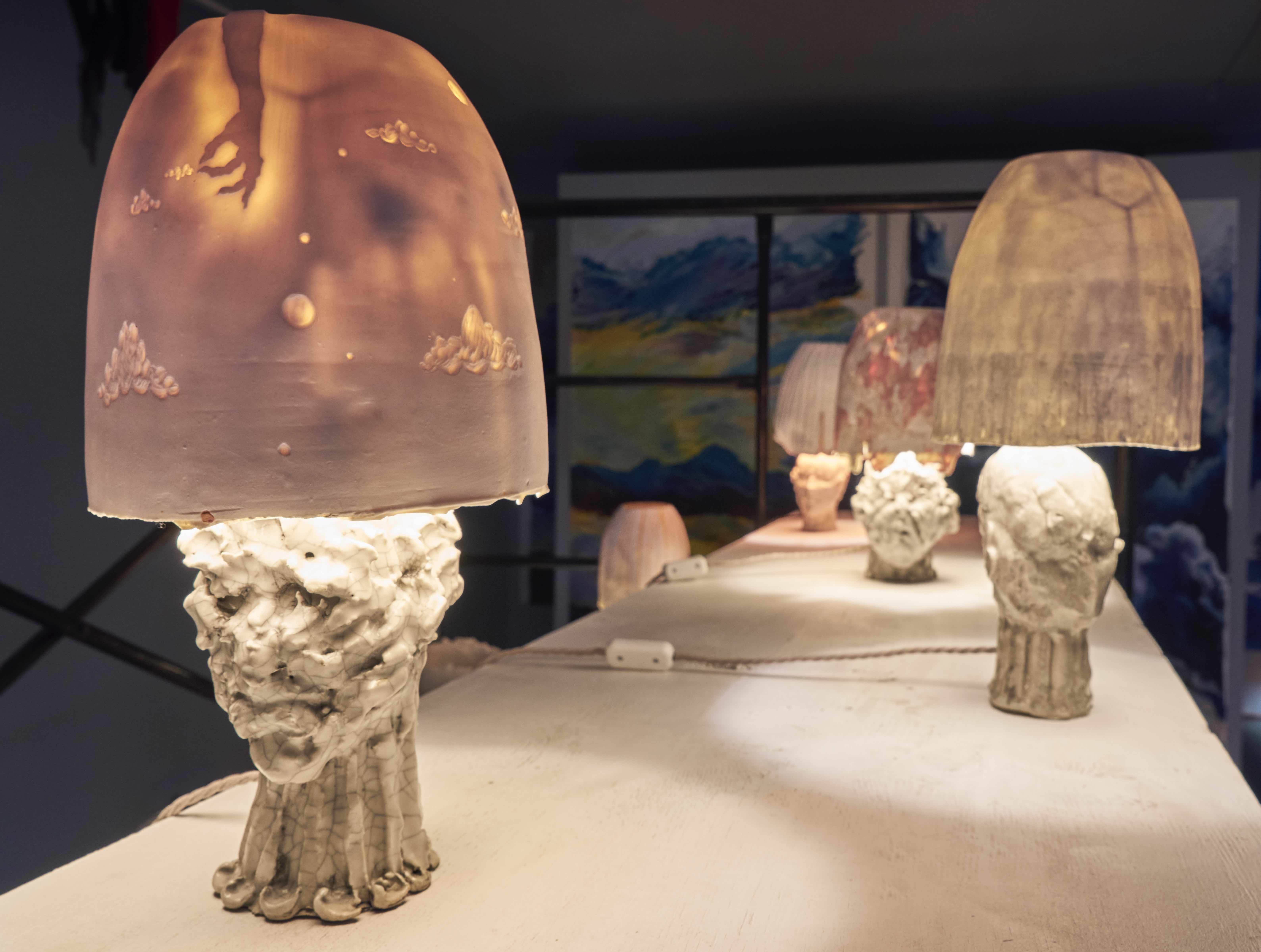
Loulou Siem
Structure of Stand Alone Monuments
Exhibition
-> Feb 9 2024 – Mar 3 2024
Structure of Stand Alone Monuments is the first solo show of British artist Loulou Siem in Mexico City. From Descartes onwards, contemporary philosophy has grappled with the fundamental inquiry of: "How can the subject genuinely apprehend the object?”. Consisting of a multimedia installation, it is the result of the artist’s most recent artistic endeavors centered on a deep exploration of architecture and architectural monuments, objects and subjects. The exhibition features a range of sculptures, which also double down as illuminating fixtures, complemented by a series of paintings and works of fabric, investigating a vast range of concepts between archaeology and sociology, practicality and illusion, sensibility and understanding. Siem, in this way, delves into the intricate transformation of their purpose and function within different spatial and temporal contexts, building over excavations of ideas and things, new realities.
Almost like a dystopic archeological site of a time that never was, the “excavated” installation attempts to recall various stages of human and architectural presence. Playing with scaffoldings and familiar elements, it explores and scrutinizes museological display in its various forms. This entails examining critically the act of presenting a functional object within a fetishized context, thereby bestowing upon it the status of an idol. Also questioning the power dynamics between the object and the viewers, the exhibition intends to offer a unique perspective that empowers the object, disrupting in this way the conventional — rather passive — viewing experience. While the porcelain works reside in a realm stuck betwixt construction and deconstruction, they relate to bodies and how they interact with their surrounding conditions and circumstances. Depending on the interpretation of ongoing material and metaphysical realities, the arm-shaped fabric pieces could be read as an extension of the sculptures, but also of Human existence per se. Presented in what can also be considered a space between domestic and industrial, finished and unfinished, the works inhabit a liminal space in which remembrance trumps existence. A space where traces write the narratives of the yet-to-have lived. What is left to see are the marks of a Human presence that never existed, a lived experience that never occurred. Shadows, or simply useless gloves? Hands or imprints? Memorabilia or deception? Those arms, like the paintings and the sculptures, challenge traditional boundaries of art by investigating the tension between form and function, fact and properties, the interplay between the functional and the non-functional, and the contrast between form and formlessness. Brilliantly stated by Gilles Deleuze “A concept is a brick. It can be used to build a courthouse of reason. Or it can be thrown through the window'', these explorations shed light on the counter-mechanics of our value systems and the elements that shape our perception and apprehension of specific contexts, objects, concepts, and most pertinently art. Furthermore, the artist reevaluates conventional modes of exhibition, sparking contemplation on what it means to present something in a secondary or tertiary form, prompting a profound reflection on the existence of the object in its reproduced version, like it is explored, for example, in recycling as a modus operandi. Objects therefore have infinite stories, rather than existing in a completed state, they are in perpetual flux within a never-ending movement of folding and unfolding of new meanings and understandings. By portraying sculptures as prosaic objects integrated into our daily lives, Loulou Siem initiates a dialogue on the significance of lived experiences and how they intersect in orbit with art. Structure of Stand Alone Monuments attempts in this way to serve as a thought-provoking exploration of the multifaceted relationships between, art, and architecture, objects and subjects, ultimately redefining our understanding of these connections in the context of architecture and artistic expression.